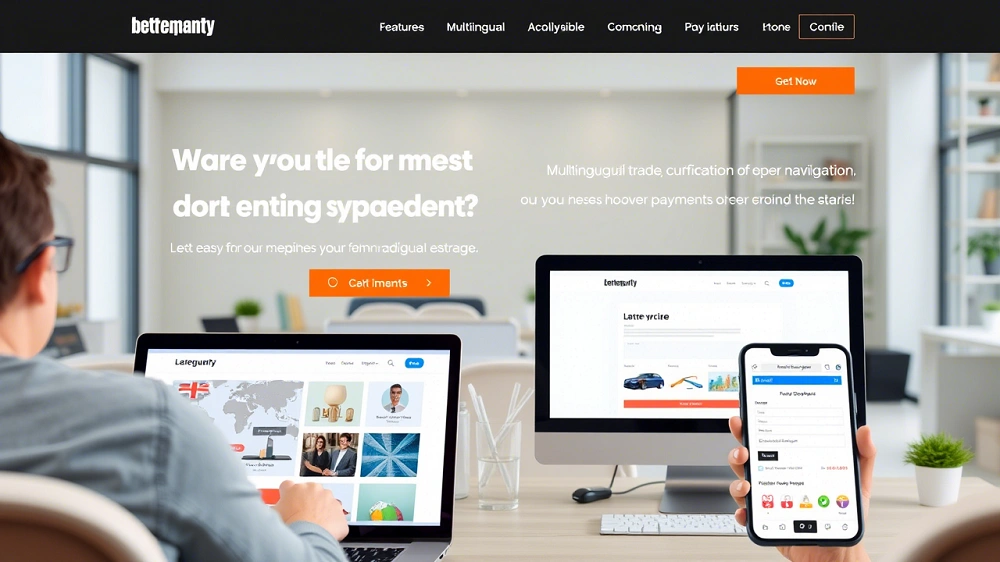Confused About Foreign Trade Website Promotion? Don’t Panic! A Comprehensive Cost-Benefit Analysis of Overseas Marketing Methods
09 Jul 2025

The Challenges of Foreign Trade Website Promotion
Are you also struggling with promoting your foreign trade website? Faced with various overseas marketing methods like social media ads, SEO, affiliate marketing, and email marketing, many business owners feel overwhelmed. Each method has its advocates and critics, but which one is truly best for your foreign trade website? Today, we’ll objectively analyze the pros and cons of mainstream overseas marketing methods to help you make informed decisions.
The key to foreign trade website promotion lies in finding the method with the best cost-benefit ratio. Many businesses initially invest heavily in social media ads only to find customer acquisition costs remain high. Others rely entirely on SEO but give up due to slow results. In reality, there’s no one-size-fits-all solution – only strategies best suited to your business development stage and goals.
Overview of Mainstream Overseas Marketing Methods
SEO (Search Engine Optimization)
SEO is a long-term strategy to improve website ranking on search engines like Google through content and structure optimization. For foreign trade websites, SEO advantages include:
- Long-term effectiveness: Stable rankings deliver continuous free traffic
- High credibility: Organic results gain more user trust than ads
- Targeted traffic: Keyword optimization attracts users with real purchase intent
However, SEO has limitations: slow results (typically 3-6 months for noticeable impact) and requires ongoing content creation and technical optimization. New sites needing immediate traffic may need complementary methods.
Social Media Advertising (Facebook/Instagram/LinkedIn)
Social media ads are a primary method for quick traffic generation. Advantages include:
- Immediate results: Traffic starts flowing immediately after launch
- Precise targeting: Demographic, interest, and behavior-based audience selection
- Diverse formats: Supports images, videos, carousels, etc.
Disadvantages are clear: high costs (especially in competitive industries), unstable performance (platform algorithm dependent), and typically lower conversion rates than SEO traffic. Traffic stops immediately when campaigns pause.
Affiliate Marketing
Affiliate marketing pays commissions based on sales generated through KOLs or partner websites. Advantages for foreign trade sites:
- Lower risk: Pay only for actual sales
- Extended reach: Leverage partners’ audiences
- Diverse channels: Work with multiple affiliates simultaneously
Challenges include managing multiple partners, commission impacts on profits, and limited brand control. Finding quality affiliates also requires time and resources.
Email Marketing
Email marketing maintains contact with potential and existing customers. Advantages include:
- Low cost: Minimal cost per contact compared to other methods
- High personalization: Behavior-triggered customized content
- Measurable: Clear metrics like open and click rates
Main challenges: building quality email lists, spam folder risks, and needing continuous content creation. Stricter privacy regulations are also reducing effectiveness.
Preliminary Cost-Benefit Comparison
To better compare these four mainstream methods, we evaluate them across several dimensions:
| Method | Initial Cost | Long-term Cost | Speed | Traffic Stability |
|---|---|---|---|---|
| SEO | Medium-High | Low | Slow (3-6 months) | High |
| Social Ads | High | High | Fast (Immediate) | Low |
| Affiliate | Medium | Medium | Medium (1-3 months) | Medium |
| Low | Low | Fast (Immediate) | Medium |
The table shows no method is perfect. SEO has high initial costs and slow results but lowest long-term costs and highest traffic stability. Social ads deliver quick traffic but require continuous investment. Affiliate and email marketing fall between these extremes.
How to Choose the Optimal Marketing Mix?
The most effective strategy for foreign trade websites usually combines multiple methods tailored to your business development stage:
1. Startup Phase
Focus on social ads for quick first customers while building SEO foundations
2. Growth Phase
Add affiliate channels while continuing SEO optimization
3. Mature Phase
Make SEO the primary traffic source, supplemented by remarketing ads and email marketing
Notably, SEO should be every foreign trade website’s long-term strategy. Though slow initially, its ROI improves over time. Many clients find after 6-12 months of consistent SEO, organic search contributes over 60% of total traffic, with higher conversion rates than other channels.
If you’re uncertain about your foreign trade website’s marketing strategy, start with a comprehensive website audit to assess current SEO foundations.
Free SEO Audit Service